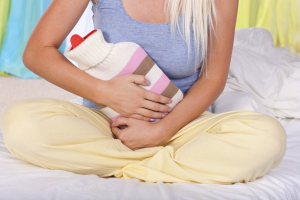Different phases of the menstrual cycle have a significant impact on the manifestation of cystitis symptoms. Both the urethra and the lower part of the bladder have the same embryonic origin as the vaginal tissue. Therefore, hormonal changes increase the risk of recurrence of cystitis, depending on the phase of the menstrual cycle. Let's take a closer look at what the menstrual cycle is and how it affects a woman's urological health.
Cystitis and delayed menstruation: is there a connection?
Is cystitis a cause of delayed menstruation? Answer: No. The opposite is more likely. Cystitis can be triggered by hormonal changes responsible for the menstrual cycle. How can each of the 4 menstrual phases affect the occurrence of cystitis?
During menstruation, painful symptoms at the bladder level usually decrease or disappear completely. The frequency of urination increases, which allows for better flushing of the bladder, preventing the occurrence of urinary tract infections. This is due to a sudden, sharp drop in progesterone levels, which leads to the removal of fluid accumulated during the premenstrual phase (when progesterone levels were at their highest).
The drop in progesterone levels also increases the number of bowel movements and the amount of fluid excreted in the stool. This causes a change in stool, which becomes softer and more frequent. When the bowels are empty and the uterus is reduced in size, the pressure on the bladder and pelvic nerves is also reduced .
The follicular phase follows menstruation and lasts about 8 days. During this phase, estrogen levels increase and reach their maximum peak. This increase in estrogen causes the maturation of a follicle containing a fertilized egg. Increased estrogen levels, increased vaginal lubrication, and a not yet very large uterus provide a woman with a certain urogenital well-being.
The ovulatory phase follows the follicular phase and lasts approximately 48 hours. The mature follicle activates the secretion of luteinizing hormone, which is followed by a sharp decrease in the levels of estrogen and progesterone. These hormonal changes weaken the walls of the follicle, which ruptures, pushing out the egg. The egg is captured by the tubes and can be fertilized by male sperm. The decrease in estrogen levels leads to a decrease in the protective ability of the urogenital tissue and a decrease in the number of beneficial lactobacilli . All this increases the risk of bacterial relapse.
Those trying to conceive during the ovulatory phase experience an increased incidence of cystitis recurrence. This is due to the increased frequency of sexual intercourse in this phase and the alkalinity of the sperm, which, by further increasing the pH of the vagina, prevents the survival of beneficial lactobacilli .
The luteal phase begins immediately after ovulation and lasts 14 days. Unlike the other phases, which vary in length, the luteal phase is always the same length. During this phase, the follicle that released the egg during ovulation transforms into the corpus luteum. If the egg is not fertilized, the corpus luteum will disappear, progesterone levels will drop sharply along with estrogen levels, and menstruation will begin, and a new menstrual cycle will begin.
The premenstrual phase is the most critical period for recurrence of cystitis. Vaginal dryness: an increase in progesterone causes a concentration of secretion that provokes vaginal dryness, which, on the one hand, makes the mucous membrane more sensitive, and on the other, increases the risk of microtrauma during intercourse. This favors postcoital cystitis. Since vaginal mucus contains important antibacterial substances, decreased secretion is associated with an increased risk of bacterial infections during the premenstrual phase.
Anxiety, stress and depression lower the pain threshold, increase muscle contractures and reduce immune defenses, predisposing the bladder to new infections. Thus, we see that ovulation and the premenstrual phase are the most critical moments in relation to cystitis.



















